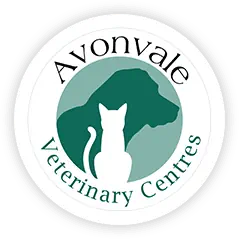Spot the difference…….


(Images taken from University of Cambridge BOAS research group website)
These images are both CT scans of dog heads. The dog on the left is a Labrador Retriever and the dog on the right is a Pug. Both dogs have the same anatomical structures except the Pug has them packaged in a much more compact skull. Pugs are just one type of dog classed as a brachycephalic breed. The term ‘brachycephalic’ literally means ‘short head’. French bulldogs, Bulldogs, Boxers and Shih-tzus are also considered to be brachycephalic breeds.
The black areas on the scan pictures represent air within the skull making it possible to compare the airways of these two dogs. When dogs inhale, air is sucked into the nostrils and flows over the nasal turbinate bones. It then passes through the naso-pharynx (throat) and continues into the trachea (windpipe) before reaching the lungs. The scan of the Labrador’s skull shows the airways are relatively wide and unrestricted. The scan of the Pug’s skull shows a much shorter nose with a narrower airway which becomes almost completely constricted around the throat.
Trends in the popularity of specific dog breeds are not uncommon in the UK. According to The Kennel Club, Labradors were the most popular breed in the UK for nearly 30 years before being nudged into second place in 2018 by French Bulldogs. The popularity of all brachycephalic breeds has soared in recent years. Images of these dogs have been widely used in many advertising campaigns promoting products ranging from insurance to mobile phones.
The more demand there is for these dogs the more intensely they are bred and this can lead to a higher rate of breed-related health problems. Brachycephalic Obstructive Airway Syndrome (BOAS) is a condition affecting a large number of these animals. Some dogs have severely deformed airways which can lead to serious breathing problems.
The main physical features seen in dogs suffering from BOAS include: narrowed nostrils, excessive soft tissue inside the larynx, an over-long soft palate,a narrowed trachea.
Dogs suffering from BOAS display symptoms that include: noisy breathing and snoring, reduced exercise tolerance (including collapse in severe cases), sleep apnoea, swallowing problems, reverse sneezing.
Environmental factors can contribute to the severity of the disease. Hot weather is particularly difficult for brachycephalic dogs; they can overheat very quickly and may develop life threatening hyperthermia. Dogs who are overweight carry excessive fat around their throats which can exacerbate the symptoms of BOAS.
The severity of BOAS varies between individuals; a grading system has been produced by Cambridge University to help identify dogs in danger of developing life threatening breathing difficulties. Brachycephalic dogs who score Grade 0 are entirely unaffected and can breathe normally. Dogs who fall into the Grade 3 category are severely affected and will require surgical intervention in order to lead a normal life.
The Kennel Club is funding a research project led by the University of Cambridge into BOAS as there are concerns that unless responsible breeding programs are introduced the number of dogs suffering from BOAS will continue to rise.
Dogs who are affected by BOAS may lead a better quality of life if they undergo surgery to widen their nostrils and reduce the amount of soft tissue obstructing their airways.
At Avonvale we support responsible breeding and therefore feel it is important to highlight BOAS as a potential concern associated with brachycephalic breeds. We see many brachycephalic patients and enjoy getting to know these fascinating dogs with huge personalities; they can make wonderful family pets.
Before buying a puppy it is worth doing a bit of research to ensure that breeders have considered BOAS and are only producing puppies who are not affected by this syndrome. It is a good idea to view both parents and also any offspring from previous litters.
If you would like any more information about BOAS or are worried about your dog please contact us at any of our surgeries.






